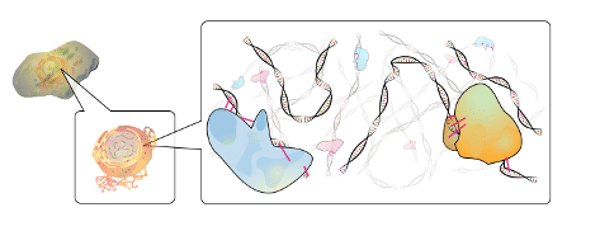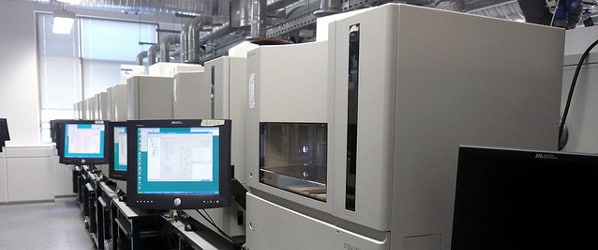Since our early steps in Science we have been told that every cell in our body has the exact same genetic information (minus one or two alterations). Therefore, the great variety of cells in our body comes from gene expression – each cell must express one set of genes and repress another set to function correctly. And even though we have this knowledge, we still have difficulty pinpointing which gene (or set of genes) is vital for each cell. This is due, not only to a technical difficulty, but also because cells are ever-changing, ever-adapting. Therefore, gene expression is almost like Schröndiger’s cat. A messy concept, very hard to grasp, but extremely interesting. This is where single cell RNA sequencing comes in.
In this age of transcriptome and genome sequencing, we have some great techniques to really observe what’s going on. RNA sequencing is one of these great techniques: by converting RNA to cDNA, we can quantify, discover and profile RNAs. And even though RNA sequencing may give us great insights, it doesn’t come without bias: most RNA sequencing is performed on tissue samples or cell populations. Biological differences between cells can be mistaken for technical noise or obscured by averaging.
However, single-cell RNA sequencing (scRNA-seq) goes a step further. It is meant to take a photographic still of all of the gene expression happening in one cell in that exact moment. Theoretically, it allows us to distinguish between the expression of cells within the same tissue—which is absolutely amazing!
How Does Single Cell RNA Sequencing Work?
Isolation of Single Cells
The name gives it away. We start by isolating cells. The critical step in obtaining the transcriptome of a single cell starts by isolating one individual cells from a population of cells.
We can isolate cells from dissociated cell suspensions or a tissue sample. There are many methods that may be used to isolate the cell (flow-activated cell sorting, micromanipulation, optical tweezers, microfluidics and other emerging isolation technologies). However, we must always keep in mind whether the method is compatible with the downstream reactions.
scRNA-seq
After obtaining our cell, we must isolate the RNA. This will allow us to know which genes were being expressed in that precise moment of time in that cell. We cannot directly sequence RNA molecules, so we have to think outside the box. This technique uses reverse transcriptase to reverse transcribe RNA into cDNA. We can then amplify the cDNA using PCR, and sequence the amplified cDNA using next-generation sequencing technologies. Therefore, we can obtain a large amount of data. The raw data then has to be worked on and analyzed through a workflow designed specifically for the scRNA-seq data.
We must always remember, a large set of data without proper treatment and contextualization doesn’t mean much!
After we have all of our information sorted out, we are ready to profile our cell.
Applications of scRNA-seq
This technique offers information on our cells: its heterogeneity and its inner workings.
It can be used in many biological fields, from basic research to clinical applications.
From stem cell differentiation, embryogenesis, whole-tissue analysis and even applications in oncology, it is becoming a powerful tool. Indeed, it was considered “Method of the Year” by Nature publications, in 2013, and its popularity keeps rising.
However, not everything is roses.
Challenges of scRNA-seq
Like any other technique, there are some challenges that we need to keep in mind when performing this method, and specially, when analyzing the data provided by it.
As we know, RNA has many functions in our cells, and there are different RNAs doing different functions. It might be regulatory functions, or we might be talking about mRNA. Either way, RNA losses could cause us to miss a low abundant transcript altogether! And, it is still very difficult to differentiate between technical noise and low abundant transcript. Therefore, it is essential to improve sensitivity. So, we can see all different RNA and be confident of its abundance in cell, because it gives us great information about the small regulatory (and often low abundance) RNA.
Single-Cell RNA Sequencing Gives Unique Insight
And even though there are still some challenges to overcome, there is no doubt that the single-cell approach is the way to go. By looking at a specific cell we can start to understand the importance of each specific cell in a given tissue! By looking at some you can understand the whole.




